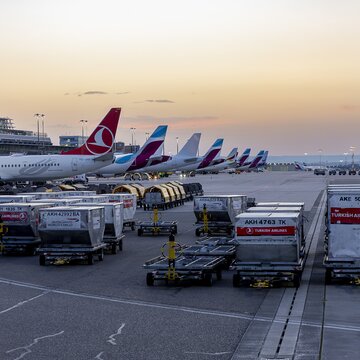What is Airport CDM?
The term Airport CDM stands for “Airport Collaborative Decision Making” and is a European procedure which improves the cooperation between all partners involved in aircraft handling services as well as Eurocontrol’s Network Management.
Using a comprehensive data and information exchange system, decision-making processes are to be designed to be more transparent and allow easier planning for all participants. This is intended to enable delays to be minimized and the infrastructure and staffing resources to be optimized.
The essential partners in this process are:
- the airport operators
- the air navigation service providers
- the aircraft operators or airlines
- the handling companies
- the ground handling services
- Eurocontrol’s Network Management
An ongoing data exchange of arrival and departure times between Airport CDM airports and Eurocontrol’s Network Management ensures that all departures are integrated to fit as closely as possible into the air traffic flow in Europe.
The Airport CDM procedure covers the period of three hours before EOBT (Estimated Off-Block Time) up to take-off. Hereby the whole turn-round process of an aircraft during this period is subdivided into various Milestones.




